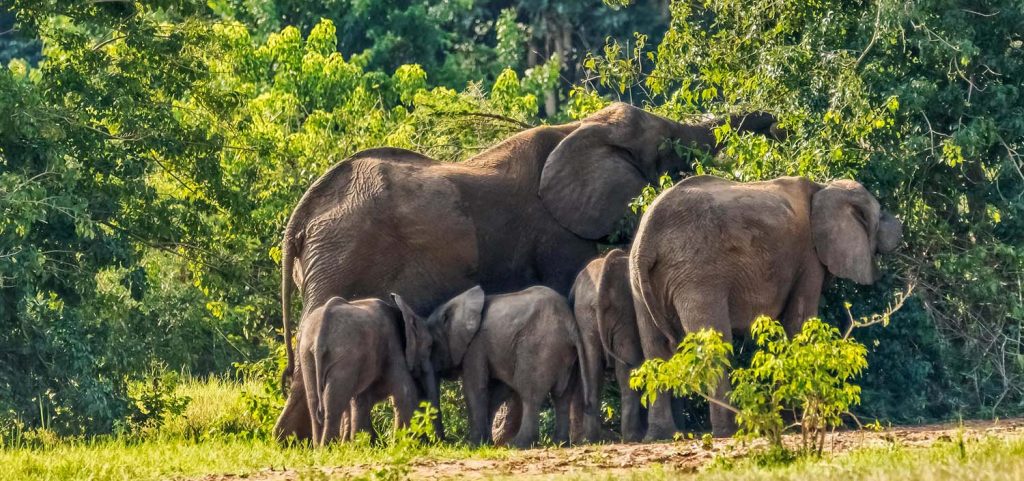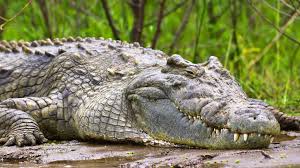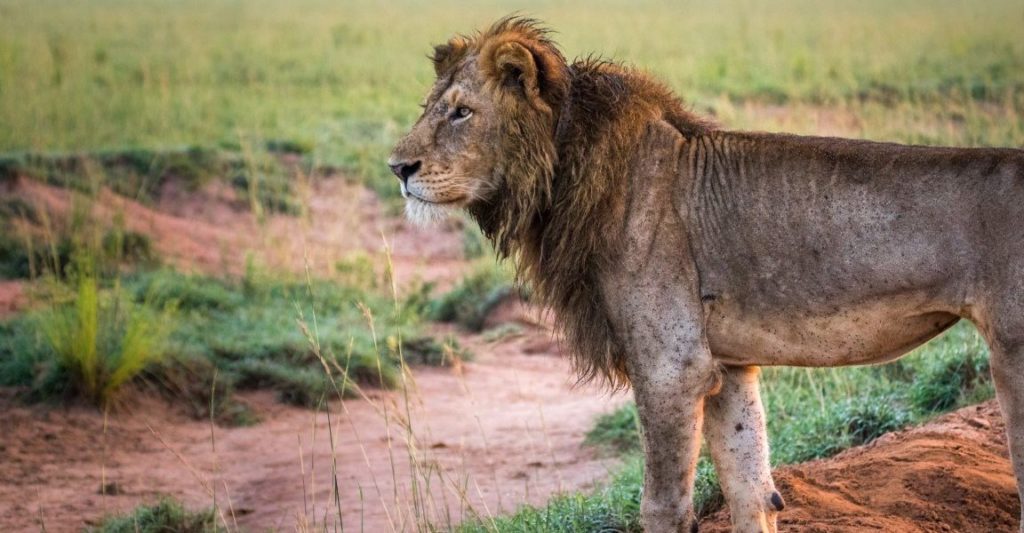Murchison Falls National Park is the largest area in the Murchison Falls Conservation Area ( MFCA ) at around 1500 square kilometres,and is joined by Bugungu and Karuma Falls Wildlife Reserves. Situated in North-West Uganda, the park buffets the shores of Lake Albert, the Victoria Nile (by which is it dissected) and the Karuma Falls.
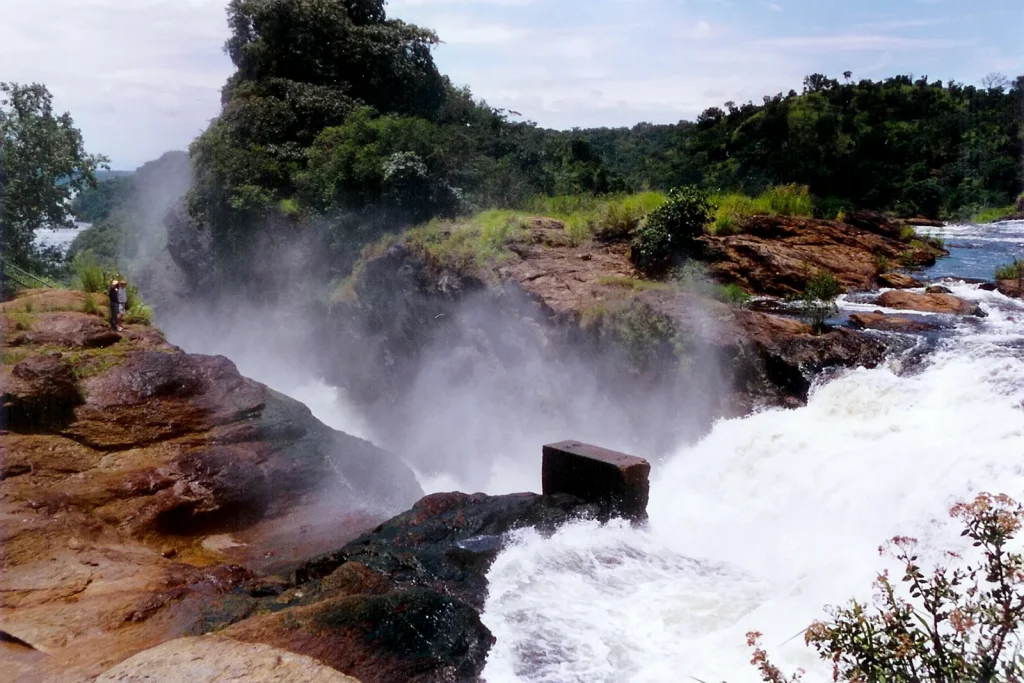
The Murchison Falls itself (also referred to as the Kabarega Falls) is a waterfall on the river Nile which forms the basis of this place of outstanding natural beauty.
The Nile cascades through a gap in the rocks and a startling 300 cubic metres of water per second crashes 43 meters down, adorned by a rainbow halo which can be seen as you stand at the foot of the waterfall, the ‘Devil’s Cauldron’.
Among the 76 species of mammal you have a good chance of seeing include; African Bush Elephants, Rothschild Giraffes, Lions, African Buffalos, Nile Crocodiles and Hippopotamuses. Rare Patas monkey can also sometimes also be spotted on the grassy plains.
This is complete with 450 species of birds, notably: The Goliath Heron (largest in the world), Grey Crowned Cranes (Ugandas National bird), African Jacana, Black-headed Gonolek, Abyssinian Ground-Hornbill, Piapiac, Giant and Malachite Kingfishers, Red-throated Bee-eater and more.
Murchison falls National park is currently the most famous of all the 10 parks attracting 31% of tourists that come to Uganda.
The park is only 4 hours away from Kampala the capital and with all the attractions is a perfect destination for exciting Uganda safaris.
Animal Life at Murchison Falls National Park
There are a total of 76 species of mammal and in excess of 450 bird species.
Amongst the many animal species you can find here are the hippo, Rothschild’s giraffe, warthlog, cape buffalo, Uganda kob, hartebeest, Nile crocodile, lions, leopards, elephants, and oribis.
Kaniyo Pabidi forest in particular is a home to primates, chimpanzees and over 360 species of different birds.
Some of the rarer species involved are the Abyssinian ground hornbill, African jacana, African quailfinch, Black-billed barbet, Black-headed gonolek, Black-headed lapwing, Denham’s bustard, Eastern grey plantain-eater, Giant kingfisher, Goliath heron, Red-throated bee-eater, silverbird, Speckle-fronted weaver, Squacco heron, Swamp flycatcher, White-browed sparrow-weaver, with the biggest attraction being perhaps the rarely seen shoebill stork.
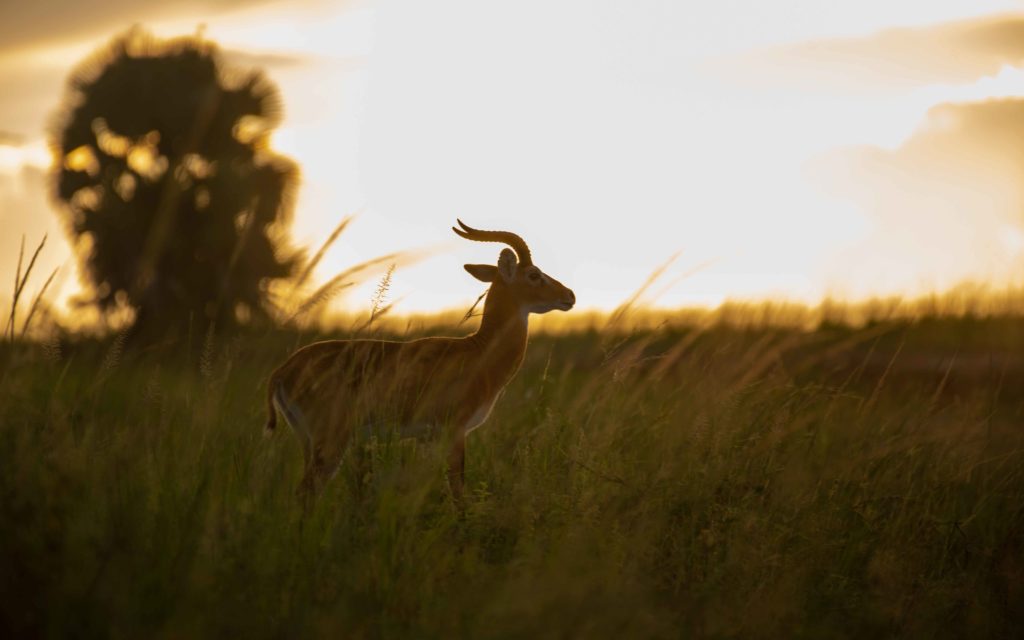
Activities at Murchison Falls National Park
The Murchison Falls
The Murchison Falls features a launch trip up the stream to observe the Falls and riverbank wildlife. This launch starts at 09.00 and 14.00 every day and last for around 3 hours.
Another boat trip goes downstream from Paraa down to the papyrus delta at the point were the river enters into Lake Albert.
This 4-5 hour return adventure provides a good chance of discovering the elusive shoebill stork and different varieties of Uganda safari wildlife.
The most spectacular view of the waterfall…
…is on the top of “where the sight & sound of the Nile crashing through”. Standing at the summit above this chasm makes for a memorable assault on the senses.
The site can be reached by car with a reasonable 30 minutes climb leaving the Paraa launch.
Sport fishing
The Nile below Murchison Falls offers exciting challenges to anglers coupled with a chance to land a huge Nile Perch (the record is 108kg), although it is rumoured that the fish there can get as big as 150kg.
A number of boats can be hired for sport-fishing by prior booking.
The park has fantastic aspects for viewing wild game
This grassland wilderness is located between the Victoria and Albert Niles with excellent views towards the western rift valley beyond Lake Albert in the Democratic Republic of the Congo.
A drive from Paraa passing Delta Point takes 3 to 4 hours. Morning & late afternoon are the best times for trying to observe game.
A ranger guide from UWA is recommended to help you in most of your game drive.
Trails through Kaniyo Pabidi Forest…
…for 8 kilometers inside Kichumbar Gate offer the opportunity to track chimpanzee and other primates.
Birdwatching is excellent with the opportunity of sighting rarities like the yellow-footed flycatcher, white-thighed hornbill and Ituri batis.
Nature walks are offered as well up through the Rabongo forest.
Getting there
The park can easily be accessed easily by air and road. From Kampala to Murchison Falls it is about 4h 30 mins via Kampala – Masindi route (282 km) or 5h 30min via Kampala-Hoima. There are also charter flights from kajjansi Entebbe to chobe airstrip.
When to visit Murchison Falls National Park
Although considered to be an all year-round destination, the best time to visit Murchison Falls National Park is in the dry season from December to mid-February, and June to July while bird watching can best be done in the wet season hen migrant birds have arrived
Gallery

